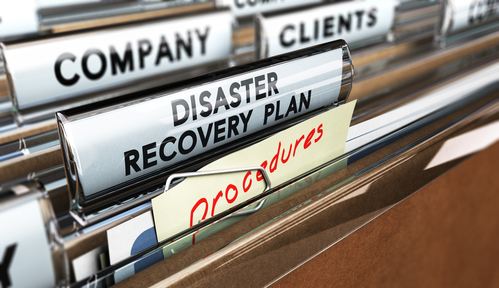Recovery Strategy for Your Business
For businesses with not a lot of resources, recovering and rebuilding after going through a significant loss from a natural disaster can be extremely challenging. However, many small business owners are not aware that they can have an effective disaster recovery plan (DRP) in place. Planning and preparing for a natural disaster can be a tremendous help especially after experiencing the worst calamities.
While big corporations can employ the services of risk managers to oversee the risks involved and work with insurance companies, smaller companies are not equipped with such advantages. Often, the latter rely on their employees or amongst themselves to set up a disaster recovery plan.
However, please note that no matter how big or small your company is, don’t hesitate to get in touch with an emergency restoration company. Their sole mission is to help you recover as many building items and materials as possible. As a whole, getting help from an emergency restoration company will maximize your money and time throughout the recovery process.
Creating a DRP

A business, whether big or small, must have a disaster recovery plan in order to save money and time after going through a natural calamity. While the specifics may change depending on what kind of business you have, the essential items to include are below. A DRP must contain:
An emergency plan
When a natural disaster happens, time is vital in saving and recovering as many valuables as possible. Create an emergency plan and make sure all of your staff members are aware of it.
Inform staff of their responsibilities.
Your employees should be aware of their roles when an emergency happens. Assign each of the tasks and responsibilities that are clear to understand. You can initiate meetings to let your employees know what these tasks are and practice carrying them out.
Important phone numbers and addresses.
Listing important contact information in one easily accessible and safe location will save you a substantial amount of time. And like we mentioned earlier, time is crucial when responding to an emergency location. Instead of wasting time searching for the right number to call during or after a calamity, you can do other important tasks.
Letting the customers know of the disaster.
How much information you would want to disclose to your customers will be up to you. However, it’s essential that they are given proper notice. You can inform them via phone, email, website or social media announcements, or hanging up a notice on your building.
Collecting the emergency items needed after the calamity.
These emergency items include temporary solutions until your business is operational again, such as communication systems, backup generators, etc.
Establishing a duration of the recovery period.
If you are a small business and are not capable of hiring a risk manager or a human resources staff, work with a restoration company and ask them what the expected duration is for the recovery process.
Gather documentation of the value of all the company assets.
Protect and insure the establishment as best you can.
Duplicate and backup all important files.
Plan to conduct business operations at a different location.
Prepare a separate, data storage off-site to protect your computer data and files.
Go Over Your Insurance Policy
Having insurance is not something you abide by just because you’re legally obligated to; you need to make sure that the coverage you have can and will cover the repair and replacement costs if a natural disaster strikes. If your business is located in a flood-prone zone, check if you have flood insurance; it’s usually not covered by standard policies. Additionally, businesses with offices located in mountainous areas may also want to check that they have earthquake insurance; it’s a separate item and is not covered under necessary policies.
If there have been any changes, additions, or updates are done to your insurance policy; it’s imperative to make sure that everything else is updated consequently. Aside from having an insurance policy, you should take into consideration the foregone losses that will most likely take place while your facilities are not operational because of reconstruction. The key is to plan as much as possible to keep the business alive despite the inevitable lost income after a disaster.
It would also be helpful to know that you can get an insurance extension included to your plan; this will ensure that you are covered when you need it.